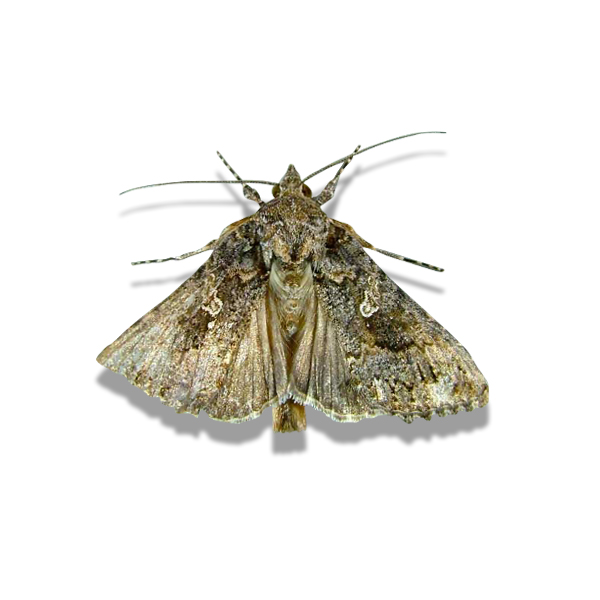Biology
The total life cycle duration ranges from 24-33 days. Adult female lays egg usually singly on the lower leaf surface near the leaf margin. Eggs hatch in 3-4 days. The newly emerged caterpillars are translucent white. Once feeding starts the larvae become pale green, with a thin white line running lengthwise down each side of the body and two white lines along the middle of the back. The caterpillar stage lasts for 12 to 20 days. Pupae are yellow green with a few brown patches when newly formed and gradually darken to dark brown before adult emergence. They are 3/4 inch in length. The pupal stage lasts for 9 days. Adult moths are dark, smoky, gray variegated with light greyish brown. Characteristic small silvery oval spots and U-shaped silvery white marks are on the middle of the forewings. Males have tufts of gold hair at the tip of the abdomen. Adults live for about 24 days and feed on nectars ( Full credited: Ronald F. L. Mau, and J.M. Diez April 2007).
Nature of Damage
It is primarily the larval stages that damage the crop. The first two larval stages feed on the lower side of the leaf, eating through the upper epidermis, leaving “windows” in the leaf. Older larvae chew larger holes in the leaves. They often do extensive damage to leaves. Although this pest usually damages leaves, occasional damage has been reported on watermelon rinds and on flowers of various host plants. (Accodingly Ronald F. L. Mau, and J.M. Diez April 2007)
Monitoring
Russell IPM manufactures and supplies pheromone lure – the Qlure, traps and complete monitoring systems for Trichoplusia ni, Cabbage Looper Moth.
Pheromone trap data gives early warning of the infestation and will also alert the user to a low level of population before it becomes serious.
The lure can be best applied with the Mothcatcher trap or Delta trap.


